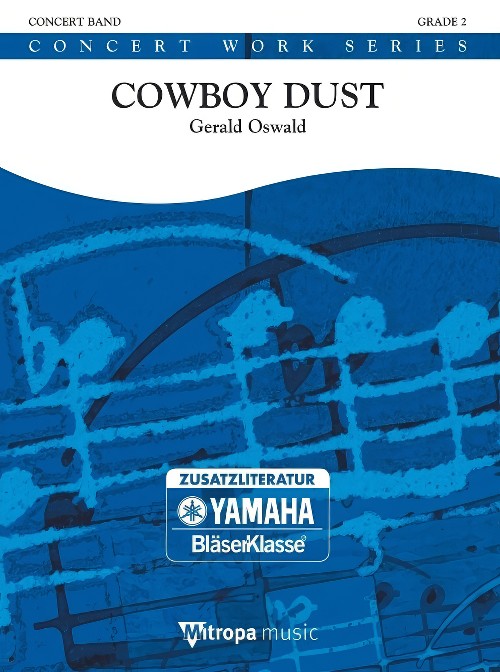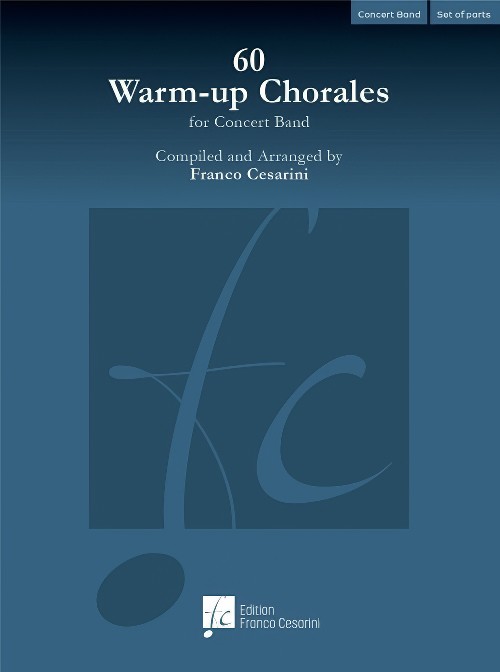Results
-
 £149.40
£149.40Humoresque - Tor Aulin
Few composers have had such an impact on Swedish music life as Tor Aulin (1866 1914). He studied violin and music theory in Stockholm 1877 83, and in Berlin 1884 86. In 1887 he founded the Aulin Quartet, which for more than 20 years played animportant role in broadening Swedish interest in chamber music. The quartet was often on tour with the composer Wilhelm Stenhammar at the piano.1889 1902 Aulin was the leader of the orchestra at the Royal Opera in Stockholm.At Aulinsinstigation the Concert Association in Stockholm (later The Royal Philharmonic Orchestra) was founded in 1902, and he was its conductor until 1909. From then on he was the conductor of the Gothenburg ConcertAssociation (nowadays The GothenburgSymphony Orchestra).Besides being a first class violinist, Tor Aulin was also an accomplished pianist, and Edvard Grieg was deeply impressed by Aulin's rendering of his piano concerto.Aulins list of works is dominated by his musicfor violin. He wrote three violin concertos, the third of which still has a place in the repertoire.Four Aquarelles for violin and piano from 1899 is his most beloved composition. In 1996 Jerker Johansson arranged this work for soloinstruments, one for each of the four movements, and concert band. The solo instruments being clarinet, trumpet, flute and alto saxophone.
Estimated dispatch 7-14 working days
-
£149.40
Lullaby from Four Watercolours - Tor Aulin
Few composers have had such an impact on Swedish music life as Tor Aulin (1866 1914). He studied violin and music theory in Stockholm 1877 83, and in Berlin 1884 86. In 1887 he founded the Aulin Quartet, which for more than 20 years played animportant role in broadening Swedish interest in chamber music. The quartet was often on tour with the composer Wilhelm Stenhammar at the piano.1889 1902 Aulin was the leader of the orchestra at the Royal Opera in Stockholm.At Aulinsinstigation the Concert Association in Stockholm (later The Royal Philharmonic Orchestra) was founded in 1902, and he was its conductor until 1909. From then on he was the conductor of the Gothenburg ConcertAssociation (nowadays The GothenburgSymphony Orchestra).Besides being a first class violinist, Tor Aulin was also an accomplished pianist, and Edvard Grieg was deeply impressed by Aulin's rendering of his piano concerto.Aulins list of works is dominated by his musicfor violin. He wrote three violin concertos, the third of which still has a place in the repertoire.Four Aquarelles for violin and piano from 1899 is his most beloved composition. In 1996 Jerker Johansson arranged this work for soloinstruments, one for each of the four movements, and concert band. The solo instruments being clarinet, trumpet, flute and alto saxophone.
Estimated dispatch 7-14 working days
-
 £104.50
£104.50Parade Militaire - Jules Massenet
As a gifted young composer, Jules Massenet (1842-1912) wrote several operas that were never produced or printed; but at the age of 25, he enjoyed his first opera production in Paris. Following that success he became a popular and successful part of the Paris music scene. In 1878, he was appointed professor of advanced composition at the conservatory, and it was while he held this position that he composed his Parade Militaire for orchestra. This lively tune is full of life, energy and subtleties, with great style and elegance, and some sudden dynamic surprises.
Estimated dispatch 7-14 working days
-
 £104.50
£104.50March of the Tankmen - Simeon Chernetski
Composer Semeon Alexanderovich Chernetsky was born in 1881 and died in 1950. A trombonist and a composition student of Alexander Glazunov, he was also a prominent military bandmaster. He was named Director of the Band of the Soviet Army in 1932, and in 1935 he founded the Band of the Ministry of Defense. He composed over 70 marches including March of the Tankmen, which he wrote in 1946, as well as other works for band. The stately manner of this stirring march displays a profound sense of loyalty and national pride that is unmistakable.
Estimated dispatch 7-14 working days
-
 £121.00
£121.00Vienna Jubilation Overture - Franz von Suppé
Franz von Suppe was born Francesco Ezechiele Ermenegildo Cavaliere di Suppe-Demielli on April 18, 1819. His father and grandfather were both civil servants, and he was distant relative of Gaetano Donizetti. He displayed his talent at an early age when he began to compose music as a young boy, but despite this he received no encouragement from his father to pursue a career in music. He went on to compose many operas, most of which remain relatively obscure; however, the overtures to "Poet and Peasant" and "Light Cavalry" are well known and have been quite popular in transcriptions for concert band and widely used in movies and cartoons. Highly exuberant and spirited, Vienna Jubilation Overture contains all the thrilling elements that are evident in all of von Suppes remarkable overtures.
Estimated dispatch 7-14 working days
-
 £78.20
£78.20Cloud(iu)s ... der Wolkenmann - Thiemo Kraas
4 Miniatures for Winds: 1. Wind 2. Storm 3. Rain 4. Sun and Snow There was a little child who enthusiastically told a story ... and a composer who was equally inspired by the child and its story to write these miniatures. At the premier performance of my composition "Arcus" in March 2011, when I explained how a piece about the rainbow came into being, a little girl came up to me and asked: "Thiemo, what about the man in the clouds?" I obviously had forgotten to include him, though he is as the little girl informed me of extreme importance in the sky: "He sits in the clouds and is responsible for the weather. He shakes rain, wind, storm or snow out of the clouds, he pushes them aside to let the sunshine through or he models them into funny figures, making people on earth smile." Fascinated by the girl's ingenuous ideas I created this small composition, sitting in my study and letting my mind wander into the sky. As the man in the clouds naturally has to have a name, I decided to call him "Cloud(iu)s ... man in the clouds". I dedicate this piece to the children of my beginner's band, who show me again and again how wonderful and precious it is to delight in the small things in life ...
Estimated dispatch 7-14 working days
-
£149.99
Marinarella - Julius Fucik
Julius Fucik (1872-1916) was born in Prague, Czech Republic. He studied under Antonin Dvork and at a young age played in military bands and later became bandmaster, a profession he practiced in various cities with many bands. In 1913 he settled in Berlin where he started his own music publishing house. As a composer Fucik is known for his light entertaining music however he also wrote chamber music, songs, choral works, a mass, a requiem and an unfinished opera. Many of his works have fallen into oblivion but many of his marches such as Einzug der Gladiatoren, Regimentskinder and Florentiner Marsch are still often played. With the concert overture Marinarella, Fucik takes us toan imaginary seaside resort on a beautiful spring day. Marinarella, a girl of the sea, accompanies us on our stroll. Leisurely walking couples on the boulevard, the murmur of the sea, fragments of a waltz melody from a caf and a concert band performing a promenade concert pass you by. A fantastic opening work for any concert.
Estimated dispatch 7-14 working days
-
 £159.99
£159.99Nostradamus - Otto M. Schwarz
Nostradamus is probably the best-known prophet of the last 1000 years. He lived at the time of the Inquisition and his predictions and medical therapies as a physician caused him to face the wrath of the church forcing him to flee many times. Following the loss of his family to the plague he devoted himself to clairvoyancy. He predicted many events in history in coded form and although there are many ways to interpret these, many are believed to be accurate and Nostradamus is still considered to be a unique personality. Whether he is denounced as a charlatan or promoted as a myth he has surely moved humankind with his prophecies.Otto M. Schwarz, soundtrack composer since2001, wrote a cinematographic work about this man, who is probably the best-known prohet of the last 1000 years.
Estimated dispatch 7-14 working days
-
 £47.50
£47.50Cowboy Dust (Concert Band - Score and Parts) - Oswald, Gerald
In this work, the composer depicts an adventurous day in the life of a cowboy. As he rides his horse across the plains, clouds of 'cowboy dust' whirl up behind him. He rides over the prairie, faces dangerous snakes, gallops across dusty fields and stumbles upon an ambush of bandits. In the gunfight that follows, he is the victor, and he rides along the prairie a silent hero, on his way to another adventure. Duration: 3.00
Estimated dispatch 7-14 working days
-
 £175.00
£175.0060 Warm-Up Chorales (Concert Band - Score and Parts) - Cesarini, Franco
During his experience as a band conductor and teacher of wind orchestra conducting at university, Franco Cesarini has dealt with the topic of warm-ups very frequently. Throughout these long years of conducting he has had the opportunity to try many existing methods, evaluating their advantages and disadvantages. After a long time, he has decided to compile a collection of chorales for warm-ups, which are organised according to the criteria that he considers most effective. While working on his60 Warm-up Chorales for Concert Band, Franco Cesarini has always borne in mind that amateur musicians play for pleasure. He feels that it is extremely important that they have satisfaction at every moment of the rehearsal and not to start the rehearsal with needless "punishing" exercises. Nobody is really motivated to start playing with scales, long notes, or tricky rhythmical exercises. There is often a distinguished absentee in band rehearsals, namely music itself! Although this publication does not foresee a specific tempo for the chorales, they should often be performed rather slowly but without dragging. Dynamics are not indicated, so that the conductor has the opportunity to draw the attention of the musicians to his gestures and to make them react according to his indications. Timpani and bell parts have been added with the aim of not leaving the percussionists completely inactive during the warm-up phase, but can also be omitted. The chorales are written in four parts (SATB) and are also playable in smaller groups. The four voices can be played in different combinations of woodwinds or brass quartets or in mixed combinations. The collection includes ten chorales for the following keys: D flat major, A flat major, E flat major, B flat major, F major and C major. With his 60 Warm-up Chorales Franco Cesarini would like to convey the message to play the chorales in a musical way, thus raising the musicians' awareness of phrasing, the right interpretation of cadences, rubato and agogic. Above all, never do anything without putting the musical aspect in the foreground. 60 Warm-up Chorales for Concert Band: A perfect collection to warm-up and improve tuning of a concert band!
Estimated dispatch 7-14 working days
